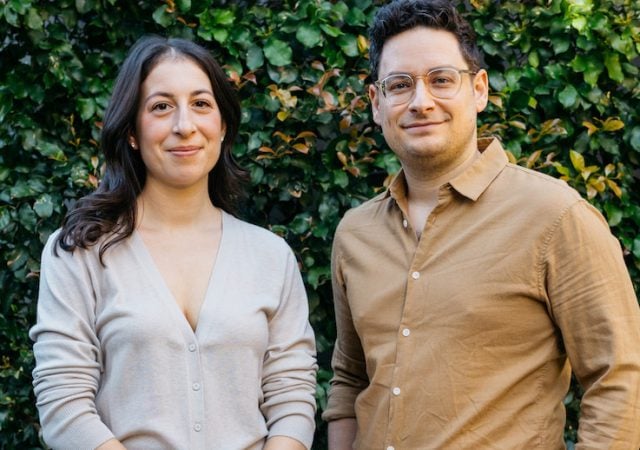Open banking in Australia is the first train to leave the station under the Consumer Data Right (CDR).
This past year has been critical in laying the tracks. We have 72 banks registered by the Australian Competition and Consumer Commission (ACCC) with the status of Data Holder, so they can now supply data. This covers 95% of customers in the banking market and in 2022 we should see the remaining banks catch up.
On the demand side, out of 26 unrestricted Accredited Data Recipients, 11 have “active” status. In 2022, we should see a range of functioning CDR based apps, using the CDR rails.
This means that more and more consumers can start using their data right to see the promised benefits of choice, convenience and confidence, saving time, money and hassle when satisfying their banking needs.
Looking ahead into 2022 and beyond, here’s what we know will happen, what we’d like to see, and where we can go next.
What will be new in 2022?
In addition to the CDR Representative and Outsourced Services Provider models that have been available since October 2021, three new data access arrangements will be available from February 2022, namely the Sponsor/Affiliate, Trusted Advisor and CDR Insights models. Whilst there are still some questions over some of the practical arrangements, such as who is responsible for verifying the trusted advisor’s status, these new pathways will make it easier for more businesses to receive consented consumer data by partnering with an unrestricted ADR such as TrueLayer.
A single consent model for joint bank accounts will apply from July 2022, which is a huge boost for mortgage lending, arguably CDR’s “killer use case” in terms of saving ordinary Australians thousands of dollars.
From November 2022, all banks must have commenced data sharing functionality for business accounts, thus completing Phase 3 of the CDR’s rollout into the banking sector, at which point all banking product reference data will be in scope.
What’s on our Christmas wish list?
It’s always been important that the CDR should be both secure and useful. To date, privacy and security have been embedded by design, however, the UX of consent flows has not been prioritised. We’d like to see a redesign to reduce friction and accelerate adoption.
There deserves to be a lot more focus on CDR’s benefits such as open banking use cases across payments, credit and lending, digital banking, personal finance and wealth … just to name a few!
(And that’s before we get to ecommerce, iGaming, marketplaces and financial inclusion.)
We welcome the recent comments from the government indicating support for a public education campaign and grants to enable the development of CDR products to provide support for vulnerable customers.
We also hope that the government announces a clear intention to ban screen scraping, so that old red rattler carriage can be decoupled.
All railway systems need a Controller and it’s great to see the ACCC’s new performance dashboard – a kind of “CDR Central” – showing Data Holder performance and available information. If some parties are not up to scratch, then firstly we all deserve to know, and secondly together we can all help.
Activating switching points with action initiation and payments
The real magic of CDR cannot be unlocked without action initiation, including payments, so that consumers can instruct third parties to initiate actions on their behalf.
With greater tools and insights to make decisions that are right for them, consumers can have more confidence in major decisions like buying a home, having a baby, and saving for retirement. All of these life events can be massively streamlined with data sharing.
CDR is paving the way to open finance encompassing banking, payments and more. Removing the burden of administrative tasks such as comparing and switching car insurance or superannuation policies will deliver real value to consumers, arguably more so than the present designations of energy and telco are likely to deliver.
The critical role of intermediaries in the CDR ecosystem
At the end of the day, it is the consumer’s data right, which means that consumers need to have means, motive and opportunity to use the CDR. We’re almost there on the banks’ side, and the new access pathways will enable more use cases on the consumer side.
Now, the data needs to flow, and that means the plumbing needs to work, at speed and at scale.
In 2022, intermediaries like TrueLayer will play a hugely important and critical role in moving consented consumer data in real time between banks, fintechs and others.
CDR is an ongoing process and will be subject to several more iterations.
It’s been four long years since Scott Farrell’s seminal report on open banking in Australia was published back in December 2017. And despite taking almost a year to respond to his second report, which was published in December 2020, we do now have the government’s much-awaited full agreement, or agreement in principle, to 94 out of 100 recommendations.
Importantly, there is full agreement to open banking’s most important parts – namely action initiation and payments – yet we are lacking a timeline and implementation plan and nothing will happen without a lot more consultation and analysis.
As we have the federal budget in March, and a general election likely in May, there is precious little parliamentary sitting time available for enabling legislation in the first half of next year, although it does have to be acknowledged that CDR benefits from bipartisan support.
We’ve learned a lot in 2021 about the important factors that will shape the future of open banking in Australia.
Continued commitment and priority by the policy makers and legislators will be vitally important to ensure we don’t lose momentum in 2022.




















Trending
Daily startup news and insights, delivered to your inbox.